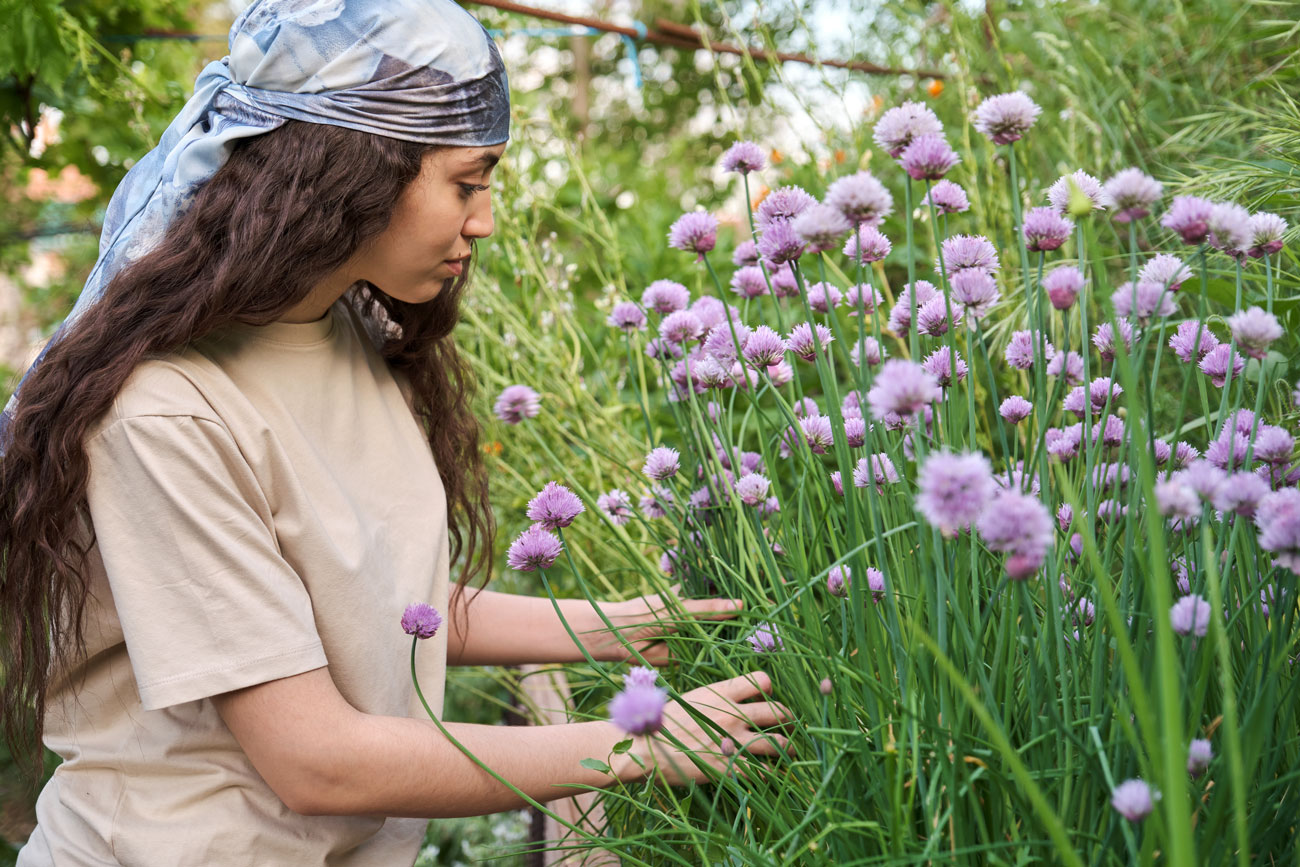Welcome to the wonderful world of herb gardening! If you’re looking to add some flavor and fragrance to your life, then starting your own herb garden is an excellent decision. Growing herbs can be immensely rewarding, particularly for beginners who are looking for a straightforward introduction to gardening. In this guide, we’ll offer practical tips that’ll help you start and maintain a thriving herb garden.
The Benefits of Having an Herb Garden
Apart from the obvious advantage of having access to fresh herbs for seasoning, there are many other benefits to cultivating your little green haven. Here are just a few:
- Herbs have medicinal properties: Many common herbs like mint, basil, and lavender have been used as natural remedies for centuries.
- Boost your mental well-being: Gardening is a therapeutic activity that has been proven to relieve stress and improve mental health.
- Add beauty to your living space: Herbs come in various colors, shapes, and sizes, making them lovely additions to any home or garden.
- Environmentally friendly: Plants absorb carbon dioxide and release oxygen, thereby improving air quality in their environment.
Starting Your Herb Garden: The Basics
With a plethora of herbs to choose from, it can be challenging to decide which ones to grow. As a beginner, it’s best to start with easy-to-grow herbs that require minimal maintenance. Some popular options include:
- Mint
- Basil
- Parsley
- Chives
- Rosemary
- Sage
- Thyme
- Oregano
You can either start from seeds or buy small plants known as ‘transplants’ from a local nursery. If you’re starting from seeds, consider purchasing a herb seed kit, which comes with several varieties of seeds and detailed planting instructions.
Location and Soil Requirements
Most herbs need at least six hours of sunlight daily, so you’ll want to find a spot that gets plenty of sun. Herbs can be grown in pots or directly in the ground, depending on your available space and preferences. For potted herbs, select containers with drainage holes and use well-draining potting soil mixed with compost.
If you’re planting directly into the ground, ensure that the soil is well-aerated by turning it over and adding organic matter, like compost or aged manure.
A soil pH between 6.0 and 7.0 is ideal for most herbs, and you can purchase soil test kits to check the pH levels before planting.
Planting Your Herb Garden
Follow these simple steps to start your herb garden with seeds:
- Check the frost date: Some herbs are sensitive to cold temperatures, so it’s crucial to begin sowing indoors a few weeks before the last expected frost date in your region.
- Sow seeds indoors: Using seed trays or small pots, fill them with moist seed-starting mix, then plant the herb seeds according to their depth and spacing requirements. Cover the trays or pots with a clear plastic wrap to maintain moisture.
- Provide light: Place the trays or pots in a sunny window or under grow lights, ensuring they receive sufficient light as they germinate.
- Transplant seedlings: When your seedlings have developed two sets of true leaves, it’s time to transplant them into larger pots or directly into your garden bed. Remember to gradually acclimate them to outdoor conditions before planting outdoors.
Planting Transplants
If you prefer to start with transplants, follow these guidelines:
- Choose healthy plants: Look for sturdy plants with vibrant green foliage and avoid those with yellowing leaves or visible pests.
- Prepare the planting area: For potted herbs, fill containers with appropriate potting mix. For ground planting, turn over the soil and incorporate organic matter.
- Plant your herbs: Gently remove the plant from its nursery container without damaging the roots, then place it into the prepared hole or container, making sure the root ball is covered with soil.
- Water well: Thoroughly water each plant after planting to help establish strong, healthy roots.
Maintaining Your Herb Garden
Herbs generally require consistent watering, but be careful not to overwater, which can lead to root rot. The frequency of watering depends on factors like climate, soil type, and herb species; however, a good rule of thumb is to water when the top inch of soil feels dry.
While herbs aren’t heavy feeders, they still need some nutrients from fertilizers.
An organic fertilizer, such as compost or fish emulsion, is a good option for feeding your plants every 4-6 weeks.
Pruning and Harvesting
Regularly prune your herbs by pinching off their growing tips, which encourages bushier growth and prevents them from becoming too leggy. To harvest, snip leaves or stems with a clean pair of scissors, making sure not to remove more than one-third of the plant at once.
Defending Against Pests and Diseases
Herbs are generally resistant to pests and diseases, but it’s always better to be prepared than caught off-guard. Monitor your plants closely for signs of infestation or illness, like wilted leaves or discolored spots. Some common pests affecting herbs include aphids, spider mites, and whiteflies, which can often be controlled using insecticidal soaps or horticultural oils. If diseases like powdery mildew or root rot become an issue, proper watering practices and adequate air circulation can help prevent these problems.
With these practical tips in hand, you’re well on your way to starting a flourishing herb garden that will provide you with fresh, aromatic delights for seasons to come. Happy gardening!



